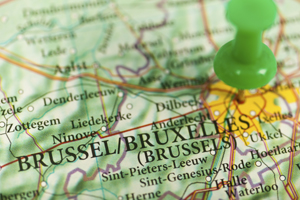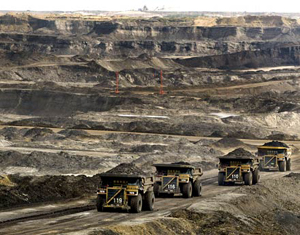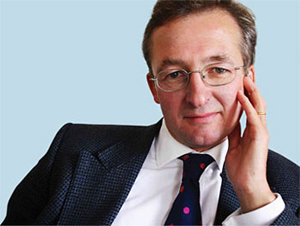The Eurovision Energy Contest 2050
on
Now playing in the European Capital
The Eurovision Energy Contest 2050
Many people will agree that the process that decides the winners of the Eurovision Song Contest is, well, not necessarily designed to award top musical genius. But what of the processes that will decide the winners of the Eurovision Energy Contest?
 |
By the way, in case the various “Roadmaps” coming out of Brussels have got you confused, that’s quite understandable. In recent months we have already had a Low-Carbon Economy 2050 Roadmap and a Transport 2050 Roadmap, and in addition to the Energy Roadmap there is also a Roadmap to a Resource Efficient Europe on its way. (This is not counting the various roadmaps published by NGO’s such as the European Climate Foundation and institutions such as the International Energy Agency.) The four Roadmaps from the Commission are all implementations of the Resource Efficient Europe Flagship Initiative, which was presented in January of this year as part of the EU's 2020 strategy for growth and jobs.
So, where will this revolution in energy systems lead us? Who are the likely winners? Well, one thing is already clear: the Road is supposed to lead us to an almost fully decarbonised future. As DG Energy puts it in a Background Paper, which you might want to check out, the Energy Roadmap should be viewed as an ‘elaboration’ of the European Union’s ‘low carbon 2050 strategy’. This strategy includes a commitment ‘to reduce greenhouse gas emissions to 80-95% below 1990 levels by 2050’.
So far so good, but there are still lots of twists and turns the low-carbon road might take. Or to continue the contest metaphor: there is still some intense debating and voting to be done before the winners are decided. Who will decide? Well, it won’t be the public watching the show. In fact, the “public” vote is already in: a ‘public consultation’ was held earlier this year. It yielded a paltry 400 reactions, mostly from NGO’s and business. No television audiences were involved.
Staunchest opponent
One very important jury that could make a crucial contribution to the end result is a 15-strong panel (“Ad Hoc Advisory Group”) that the Commission has established to provide expert advice. It met for the first time on 5 May and will deliver a report in September. It is chaired by the well-known Oxford University economist Dieter Helm. Interestingly, Helm made headlines a few years ago when he was accused of ‘tearing EU climate policy to pieces’. This was because he had said that the EU's climate and energy targets were political and did not make economic sense. But he says he has learned a lot since those days.
Still, Helm is a man with an outspoken vision. He came to Brussels in early May, where he spoke at a seminar. And not just any seminar: it was one on unconventional gas organised by Poland, the one EU Member State that is wholeheartedly pushing for the development of shale gas, in which it sees
| 'Climate change is almost entirely about coal. Emissions from gas are half that from coal and shale gas at very low cost opens up an opportunity for a shift from coal to gas.' |
That’s 12 points for unconventional gas from the jury in Warsaw, but whether shale gas will get many more points is by no means certain. European Commission officials admit they have not even the beginnings of a policy on shale gas. Meanwhile Member States are setting off in radically different directions. While Poland is falling over itself to get started, France has cancelled existing shale gas exploration permits and banned hydraulic fracturing on environmental grounds. Other countries are as undecided as the Commission itself.
Good news
At the seminar, Professor Helm made the point that all this doesn’t really matter: whether Europe decides to exploit shale gas or not, its exploration elsewhere has already broken the link between oil and gas prices, he said, and set in motion a shift from coal to gas that will bring tremendous benefits to the fight against climate change. It is gas, not oil, prices that determine electricity prices and the relative attractiveness of nuclear, coal and renewables, Helm explained. And with the US frantically producing shale gas, and China following in its wake, the global gas price is dropping, regardless of any European actions.
Helm argued that this is good news for Europe. ‘Climate change is almost entirely about coal,’ he said. ‘Emissions from gas are half that from coal [and] shale gas at very low cost opens up an opportunity for a shift from coal to gas.’
Perhaps, yes, but is it also good news for renewable energy? Or, to put it differently, how will such a shift affect the role of renewables? Helm stated clearly that the economic case for shale gas will delay the development of renewables. He foresees a “two-step transition”, first from coal to gas, then from gas to renewables, to get to a zero-carbon economy. The disadvantage of this, he conceded, is that European governments will end up having to subsidise renewables for a long time to come. He admonished them to make an effort to explain this to their citizens.
Raising the target
Not everyone will be happy with a “delay” in the development of renewable energy. The European Renewable Energy Council, an industry organisation, called in May for a 45% renewables target for Europe for 2030. It got at least moral support from EU climate Commissioner Connie Hedegaard, who responded that, in the wake of Fukushima, a debate should start on raising the renewable energy target (today it is 20% by 2020).
Additional support for renewables has recently also come from the International Energy Agency (IEA). In a new study, which the Paris-based OECD-think thank unveiled in Brussels at the end of May, the IEA
|
According to the IEA, the potential to absorb renewables ranges from 19% in the least flexible area assessed (Japan) to 63% in the most flexible area (Denmark) |
The IEA study flatly contradicts the claim of Eurelectric, the association of the electricity industry, that every 1MW of renewables requires 1MW of back-up power. According to the IEA, the potential to absorb renewables ranges from 19% in the least flexible area assessed (Japan) to 63% in the most flexible area (Denmark). Sad news for Japan, which after Fukushima has placed high hopes on renewable energy, but good news for Europe.
Terrorism
Speaking of Fukushima, few contestants in the Energy Contest are more controversial of course than nuclear power. In particular Germany and France are radically opposed to each other in this crucial matter. This became apparent once again over the question of the nuclear stress tests. On 25 May, the (German) Energy Commissioner Günther Oettinger was forced to endorse an agreement on the ‘stress tests’ for European nuclear reactors that was exactly the same as an earlier version of the same agreement he had rejected two weeks earlier.
Under the agreement drawn up by the the European Nuclear Safety Regulators Group (ENSREG), which is composed of the EU’s 27 national nuclear regulators, including those of the 13 countries that don't have nuclear power, stress tests will start on the 1st of June. They will, however, only assess the ‘safety’ of Europe’s 143 nuclear plants, not their ‘security’. Safety means the plants’ ability to cope with national disasters and other accidents including plane crashes. It does not include the threat of terrorism. ENSREG insisted it has no competence to assess whether nuclear power plants are secure from terrorist attacks. It has called for a new working group to be set up with member state experts and European Commission representatives to pursue the security issue. Oettinger had not wanted to separate safety from security, but was forced to accept this in the end with a majority of ENSREG in favour and an EU that could not show up empty-handed at the G8 meeting in Deauville, France.
 |
| Mining trucks at the Albian Sands tar sands project in Alberta, Canada. (Photo: Jeff McIntosh/AP) |
Oil/tar sands
Professor Helm said at the shale gas seminar that he believes that, like renewables, nuclear power will depend on long-term government support for its continued existence. He also suggested that the money saved by going for the less expensive two-step rather than one-off transition, should go into funding for R&D, for example in carbon capture and storage (CCS), electric cars and smart grids.
The struggles going on in Brussels for funding and over various other pieces of energy legislation may be viewed as mini-contests of their own, sideline events to the big 2050 Contest, but with important ramifications nonetheless. Thus, for example, the European Investment Bank (EIB) is currently evaluating 13 CCS and 65 renewables projects that Member States have submitted for EU funding. This money will come
| The oil industry – backed by Canada – is fiercely opposed to the idea of setting a default value for oil produced from oil/tar sands |
A different, but very fierce, struggle is going on over the 2009 EU Fuel Quality Directive. This requires EU fuel suppliers to reduce the life-cycle greenhouse gas emissions of their road fuels by 6% between 2010 and 2020. The Directive was implemented on 1 January of this year, but technical aspects, such as default values for the emissions of different fuels still have to be agreed. In particular one issue is holding up the process, namely whether to set a default value for emissions from oil produced from oil/tar sands that is distinct from that for conventionally produced oil.
A now-famous study by Adam Brandt at Stanford University in the US shows that the life-cycle emissions of oil/tar sands (the oil industry speaks of “oil sands”, environmentalists prefer “tar sands”) are 107.3 grams of CO2 per megajoule of energy, 23% more than for conventional oil. Members of the European Parliament and NGOs want this figure adopted as the default value for oil from oil/tar sands. This would mean that suppliers like Shell, BP and other oil companies would be forced to use less oil from oil/tar sands in their final product. Needless to say, the oil industry – backed by Canada, which is hoping to become one of Europe’s main suppliers of oil from oil/tar sands – is fiercely opposed to such a measure. They are contesting the results of the Brandt study and argue that a separate oil/tar sands rule would be an administrative nightmare. They also cite potential WTO issues. Everyone is now anxiously waiting for the Commission to finish a review of the Brandt study.
Not enough science
Then there are the biofuels. Another hotly contested side event. At the end of April, the International Energy Agency came out with – you guessed it – a Biofuels Roadmap that sketched a highly positive
| A binding commitment to energy saving is exactly the one measure European governments have obstinately refused to endorse |
There is one big caveat, though, called ILUC, which stands for indirect land-use change, i.e. the displacement of (tropical) forest by biofuel production. The Commission has repeatedly postponed a strategy for dealing with the ILUC issue. There is not enough science to take the discussion forward, the Commission said earlier this year. Now European industry and NGOs (well, at least some of them) are working together to try to craft a methodology to take ILUC into account. Industry does not want the baby thrown out with the bathwater. The tentative date for Commission proposals on ILUC remains July. Just recently, a global coaliton of ‘public, private and civil society stakeholders’ in bioenergy (the Global Bioenergy Partnership) came out with ‘a set of voluntary, practical and science-based sustainability indicators’, which it submitted to the G8 in Deauville. In the meantime technology providers like Novozymes are lobbying for a specific target for next-generation biofuels that they say will largely side-step the ILUC problem, as they are made from agricultural and municipal waste.
At the beach
 |
| Dieter Helm (photo: Utility Week) |
But Dieter Helm’s jury is expected to keep its eyes on the long term. While you and I are at the beach this summer, the Helm team will analyse a range of future energy scenarios. They are expected to take into consideration such mundane issues as high and low levels of dependence on nuclear energy, the likely delayed adoption of CCS and ILUC as well as somewhat more complex matters such as lifestyle changes, resource scarcity, adaptation to climate change and the role of electric cars. Hardly an enviable task. Advisory Group, may we have your votes please?
|
The Ad Hoc Advisory Group for the Energy Roadmap 2050 consists of the following persons:
|


Discussion (0 comments)